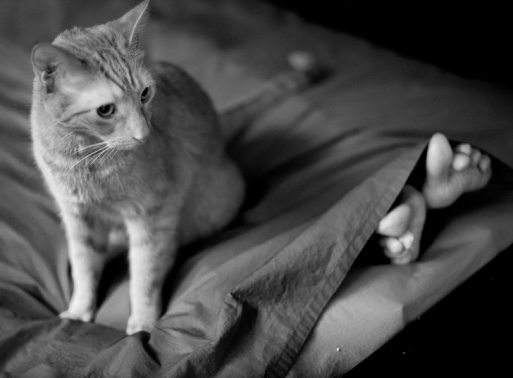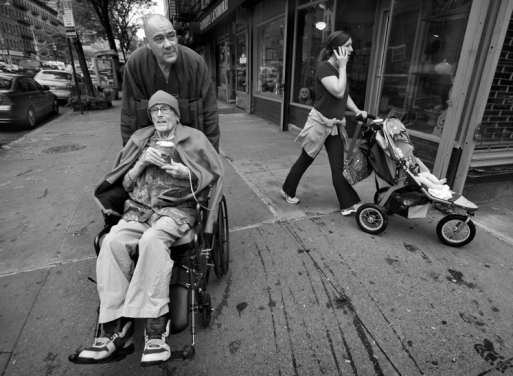“I had never looked closely for a long period at a dying person,” writes photographer Joshua Bright of The New York Times; “I had never listened to the strained breathing of a body barely functioning and had never put my head beside a man too weak to speak, smelled his pungent breath and silently shared his day in, day out view of the white popcorn ceiling.” Bright is describing his relationship with John R. Hawkins, a man who allowed the photographer to observe him for a photo series while nearing his death. Hawkins was dying from chronic obstructive pulmonary disease (COPD) and chose to be “ushered from this life” by the Zen priest Robert Chodo. In his final months, Chodo and the New York Zen Center for Contemplative Care would provide an opportunity for peace, comfort – and even joy – for Hawkins. Through his photo-series of Hawkins, the New York Times photographer illuminates many life lessons; the paramount being what he now refers to as the experience of “a good death.”
“We saw the way his forehead remained warm after his limbs had grown cold,” writes Bright about seeing Hawkins finally pass, “we talked about death…I took some photos and we teased the man who was now gone and we laughed, too. Gradually, his mouth was pulled into the cheeky smile that we knew so well.”
“…we talked about death…I took some photos and we teased the man who was now gone and we laughed, too. Gradually, his mouth was pulled into the cheeky smile that we knew so well.”
In his article “A Good Death,” Bright explains that Hawkins taught him many things, but most importantly, that we shouldn’t shrink from death’s enormity. Instead, we should let it grow – but let it grow into something good. And “good” does not mean drama; “good” does not have to mean tragedy or fame. These are media-fostered cravings for a destructive sensationalism that, truthfully, affect us more than we’d like to admit.
The photos of Hawkins show no such sensationalism. They’re remarkably quiet. They’re respectful of the ordinary, everyday scenes that made up Hawkins’s final days – and because of this, I’d argue, they become something remarkable to see today. Bright’s images capture an end-of-life experience that is loving, fragile and beautiful. But most importantly, accessible.
“Bright’s images capture an end-of-life experience that is loving, fragile and beautiful. But most importantly, accessible.”
Hawkins’s passing is relatable to viewers, because we see it as something we can create for ourselves. It’s not a death we may know from any Hollywood fiction, but “just a good one,” says Bright, “the kind that might happen to any of us if we are lucky.” As viewers, we’re lucky Bright is sharing it with us. It’s important for us not to lose the preciousness of the simply “good” in a culture of excess and extremes.
View the photo-series here.
You May Enjoy Reading:
- “Die” (1962) by Minimalist Tony Smith
- Performance Artists on Mortality: “Edge” and “Near Death”
- The “Unity” of Life and Death

 “A Good Death” by Joshua Bright
“A Good Death” by Joshua Bright





 Funeral Favors Offer Visitors a Tangible Memento
Funeral Favors Offer Visitors a Tangible Memento
 “Comeback” by Prince
“Comeback” by Prince















